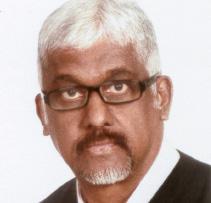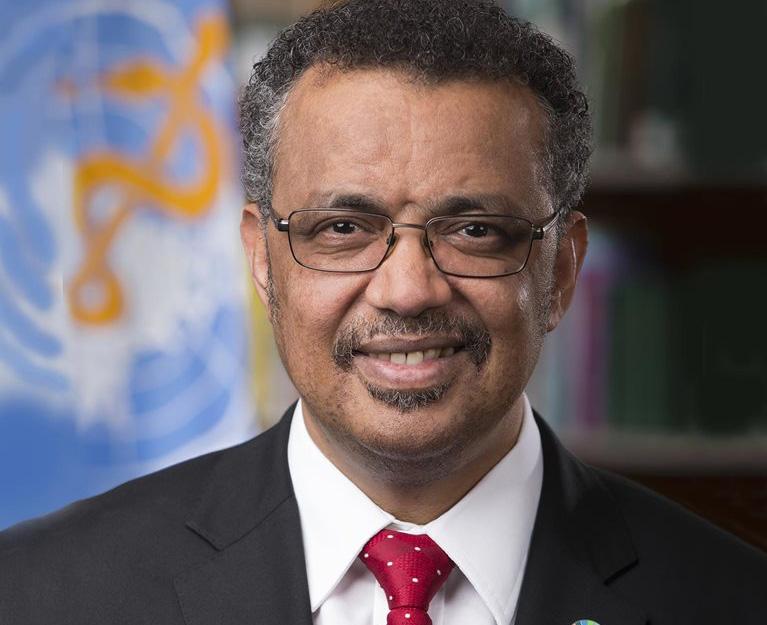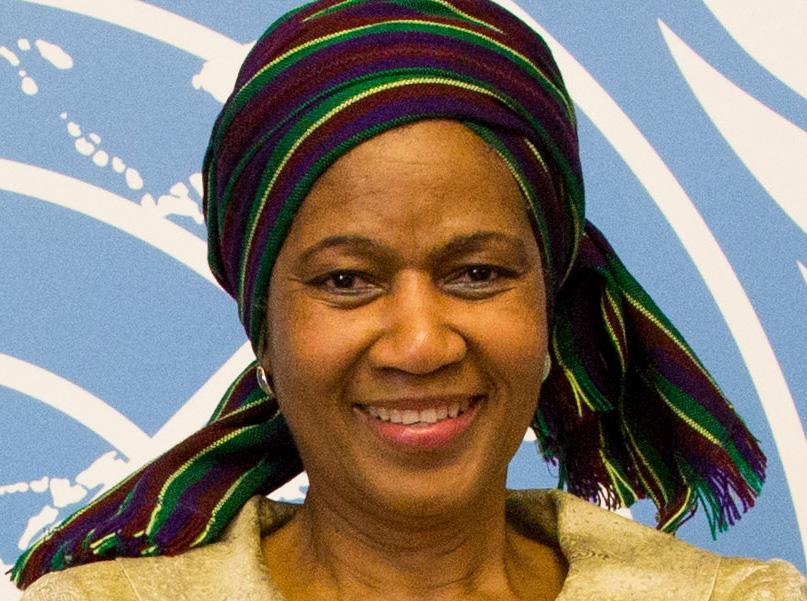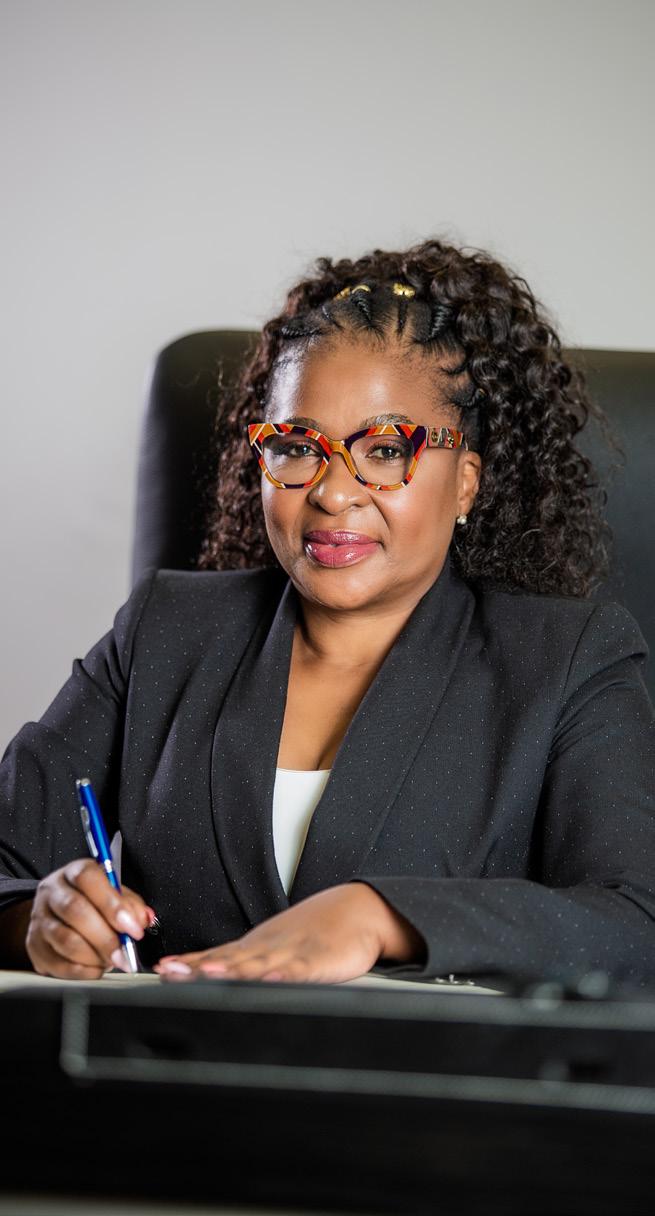
23 minute read
p.7
FUTURE HEALTHCARE ECOSYSTEMS Lessons from current systems
By Professor MN Chetty CHAIRMAN KZN DOCTORS HEALTHCARE COALITION & THE IPA FOUNDATION OF SA
Advertisement
We are living in a time of great economic and social upheaval, with healthcare businesses contending with extraordinary new financial, demographic and regulatory pressures. The economics of healthcare are set to become even tougher in the years ahead as aging populations place new demands on both private and public healthcare systems. The current healthcare system is unsustainable. One of the main problems is that reimbursement models have promoted and created healthcare silos. It has been described as follows: ‘Everyone is chasing their own rainbow’. The net result is a lack of care coordination.
In the current healthcare ecosystem the roles are clear because the interface between stakeholders is either weak or non-existent, with the various stakeholders occupying distinct niches in the overall system. It is complex and not set up to enable coordinated care at a reasonable cost that allows patients to share in decision-making.
TRANSPARENCY NEEDED
Lack of transparency has been cited as an important factor preventing the healthcare system working the way it should. Transparency can improve accountability across the eco-system. As we move ahead, we will also be challenged by even tighter finances and thinning margins, which will make cost-cutting and operational efficiency top priorities across the healthcare supply chain.
If the future is a focus on the patient, why is this not the case today? Consumers are relegated to the sidelines. Patients are not informed. The Health Market Inquiry drew attention to the asymmetry of information between the patient and care provider, which results in disempowered and uninformed consumers. Patients in our current system are passive recipients of care. They need to become active participants therein.
WHAT IS MISSING?
Historically, healthcare has been slow to embrace information technology (IT). There was a lot of interest, but technology had not gone mainstream. This is changing, but the pace of this shift is in question. The COVID-19 pandemic economic downturn has accelerated the evolution of healthcare eco-systems, which need to improve patient experience and health while reducing costs.
ECOSYSTEMS – THE NEW BUZZWORD
“Eco-systems can create powerful forces that can reshape and disrupt healthcare, with a potential to deliver personalised and integrated experience to consumers, enhance provider productivity, engage formal and informal caregivers and improve outcomes and affordability.” (Shubham Singhal, Basel Kayyali, Rob Levin and Zachary Greenberg - McKinsey)
‘Ecosystems’ will be the main buzzword in healthcare in the future. The concept was popularised as technology and digital platforms came of age, WHAT IS MISSING?
Lack of understanding about how our complex healthcare system is working
Lack of awareness about their rights as far as ownership is concerned
Lack of portability, so that they can access and share data with their providers.
allowing the exchange, production and consumption of data. The data eco-system is a living, evolving collaboration of processes and applications used to capture, integrate, analyse and share data within and between organisations, individuals and stakeholders.
McKinsey defines an ecosystem thus: “A set of capabilities and services that integrate value chain participants (customers, suppliers) and platforms and service providers, through a common commercial model and virtual data backbone – to create improved and efficient consumer and stakeholder experiences and to solve significant inefficiencies.”
This has fuelled innovation among all healthcare stakeholders to exploit the health IT space, to become leaner and more agile without compromising the end goal, which is patient care. Health IT is becoming a competitive differentiator, helping healthcare organisations attract new patients and offer more personalised services and rich health information resources. “Navigating this new environment won’t be easy. It will call for flexible strategies that can evolve in step with the changing economies, technological and regulatory landscape.”
THE FUTURE
The new paradigm reflects a ‘system thinking’ view of an industry where the walls separating stakeholders are steadily crumbling. The future will be one where the success of one depends on the success of others and where new business models of co-existence and co-development rapidly become the norm.
The future will see an opening up of vast flows of information between patients, providers and payers throughout the ecosystem – partly due to runaway medical costs. The priority will be more collaboration, more informationsharing, more interoperability and more integration. In short, the future will see more convergences.
The healthcare eco-system of the future is predicated on health IT. Its strength will lie in its power to distil massive amounts of data from disparate sources, providing mechanisms for faster, better decision-making, opening up new channels of communications between patients, providers and payers. ”At the end, enabling the predictive, preventive and participatory approaches to healthcare made possible by IT is expected to yield the most meaningful and lasting
Professor MN Chetty, Chairman: KZN Doctors Healthcare Coalition & the IPA Foundation of SA

returns to the industry and society as a whole.”
The tech-enabled future includes the accelerated adoption of electronic medical records (EMRs) that share data across networks. Digital health is the new disruptor, including EMRs, along with electronic health records and personal health records.
Healthcare will be more coordinated in the future. “It will promote the trend of ‘patient-centric’ care that emphasises preventative primary care, and close partnership between patients and providers. Empowered by information, patients will move seamlessly between all types of caregivers in an integrated fashion, with each provider staying fully informed of the patient’s overall progress. Care coordination will drive saving by improving medical outcomes and focusing care more effectively.” (Pradeep Nair - HCL Technologies – Global Technology Company)
The health eco-system of the future will operate on an evidence-based medicine platform, which will become the norm. This will require analysing massive amounts of data, including genomic and epidemiological databases, to refine diagnoses and identify the best course of treatment for each individual. This approach will certainly be the most reliable way to improve treatments and outcomes. IT will enable healthcare to be delivered on a more consistent basis in future. This will be supported by telemedicine, allowing expert care to be delivered wherever the patient lives via broadband multimedia networks.
The future will see acute hospital care at home. Patients will be admitted by their family doctor for hospital care at home. They will be managed by nurses under the doctor’s supervision. This will include ‘virtual ward rounds’. There will be broadband connectivity. Initially this will be for acute care, but can expand to chronic care. If the patient is not responding, he/she will be transferred to hospital. “Such technology bridges vast distances in an instant, giving patients new options for home healthcare and extending specialised skills of experts to more people and geographics.” (HCL)
The future healthcare industry will see stakeholders being challenged by tough choices as they seek to deliver the highest level of patient care with limited economic and human resources. This will require IT to remain at the centre of the new eco-system. It will allow stakeholders to adopt the power of collaboration and information-sharing to improve care with limited budgets, while enhancing innovation.
“Convergence will be a dominant trend in this world, and the most successful stakeholders will be those that exploit the tremendous value potential of cross-boundary integration and innovative technology partnerships.” (Pradeep Nair, HCL)
RECOMMITTING TO WOMEN'S HEALTH What must governments do?
By Tedros Adhanom Ghebreyesus, Phumzile Mlambo-Ngcuka, and David Malone 25 years after the Beijing Platform for Action on Women, progress on women’s health has been uneven, but by working together, we can create a better and healthier world for women and for all
The year 2020 offers a great opportunity to reflect on the progress made in the women’s health priorities identified in the landmark 1995 Beijing Platform for Action on Women.1 Twenty five years on, much of the agenda remains unfinished. For example, while the global maternal mortality rate declined by 38% between 2000 and 2017,2 the use of modern contraceptives by married women increased by only 2% between 2000 and 2019.3
What is clear is that progress on women’s health has been uneven, with those facing multiple forms of discrimination (e.g. on the basis of ethnicity, class, disability) and deprivation being those most likely to be left behind. For example, in 64 countries, a health professional was present at childbirth for only 54% of the poorest households compared to 92% of the richest households. 4
COVID-19 has brought into sharp focus the disproportionate impact of a pandemic or crises on women and their health. But it also provides an opportunity to reimagine a future where women’s health and rights are non-negotiable, gender equality is achievable, and working towards it is the norm.
THE IMPACT OF COVID-19
Long-standing gender and other socioeconomic inequalities have been exacerbated by the COVID-19 pandemic. While women and men seem to be infected by COVID-19 in roughly equal numbers (48% of infections are in women),5 women health workers, who constitute the majority of the frontline providers, are among those most at risk of becoming infected. Women in the general population, who were already doing three times more unpaid care work than men, are now facing an even higher burden.6
There has been an increase in reporting of violence against women, particularly intimate partner violence, from many countries.7 Lockdown measures have disrupted protective social networks, while rising economic insecurity is driving millions of people, especially women, into unemployment.
Tedros Adhanom Ghebreyesus, Director-general, World Health Organization (WHO). Twitter @DrTedros

Phumzile Mlambo-Ngcuka, Executive director, United Nations Entity for Gender Equality and Women’s Empowerment (UN Women). Twitter @phumzileunwomen

David Malone, Rector, United Nations University (UNU) and UN under-secretary general. Twitter @UNUniversity To achieve universal health coverage, explicit attention must be given to addressing inequalities , including interventions that counter unequal gender norms, prevent violence against women. “ “ All of this is impeding women’s access to basic necessities and services – a trend compounded by moves in several countries to deprioritise sexual and reproductive health services.

TOWARDS A HOLISTIC AGENDA
None of the issues highlighted above are new. The need for women to have autonomy over their sexuality and fertility is central to the women’s health agenda. At the same time, shifts in the burden of ill health mean that the agenda must be expanded to include rising rates of reproductive cancers, mental ill health, and other non-communicable diseases,8 as well as the emergence of new disease outbreaks (e.g. Zika, Ebola) that disproportionately affect women.
To improve women’s access to healthcare, investments are needed in primary healthcare and community health workers, including in decent pay and working conditions for frontline workers. The agenda should also address determinants of women’s health, such as rising air pollution, rapid urbanisation, and marketing of tobacco and alcohol that exploit gender stereotypes.
To achieve universal health coverage, explicit attention must be given to addressing inequalities, including interventions that counter unequal gender norms, prevent violence against women, and ensure women’s access to social and financial protection.
A SMART INVESTMENT
Investing in women’s health and gender equality saves lives, improves health, and protects human rights. On the financial front, the COVID-19 pandemic has presented governments
with stark choices about budget allocations. The economic and social case for investing in women’s health is clear: it reduces poverty, increases productivity, and stimulates economic growth, with up to a ninefold return on investment through better educational attainment, workforce participation, and social contributions.9
BUILDING AN INCLUSIVE FUTURE
Health, development and any post-COVID-19 recovery plans must prioritise the health of women. Women make up one half of the population, but too often their needs are treated as an afterthought. Several governments are showing the way forward by developing recovery plans that include sexual and reproductive health services,10 allocate budgets to support parents and caregivers as well as women affected by domestic violence,11 and that target social safety nets to the most vulnerable households.
We commit to continuing our support to member states to deliver on women’s health and rights, including through the Global Action Plan for Healthy Lives and Well-Being for All. We call on governments and our partners to prioritise gender equality and women’s health, including but not limited to sexual and reproductive health. We must commit to women’s leadership in health policy making. We urge male leaders to be their allies and champions of gender-equitable health policies. By working together, we can create a better and healthier world for women and for all.
This paper is part of a special series on women’s health commissioned by The BMJ and jointly supported by WHO and UNU. Read the collection at https://www.bmj.com/gender.
1. Women’s health: Fourth World Conference on Women, Beijing, China; WHO position paper. Geneva: WHO; 1995; WHO/FHE/95.8; https:// apps.who.int/iris/bitstream/handle/10665/59527/WHO_FHE_95.8.pdf?sequence=1&isAllowed=y
2. Trends in maternal mortality 2000 to 2017: estimates by WHO, UNICEF, UNFPA, World Bank Group and the United Nations Population Division. Geneva: World Health Organization; 2019. Licence: CC BY-NC-SA 3.0 IGO
3. Kantorová V, Wheldon MC, Ueffing P, Dasgupta ANZ (2020) Estimating progress towards meeting women’s contraceptive needs in 185 countries: a Bayesian hierarchical modelling study. PLoS Med 17(2):e1003026. https://journals.plos.org/plosmedicine/article?id=10.1371/ journal.pmed.1003026.
4. Women’s rights in review 25 years after Beijing; New York: UN Women; 2020; https://www.unwomen.org/-/media/headquarters/ attachments/sections/library/publications/2020/gender-equality-womens-rights-in-review-en.pdf?la=en&vs=934.
5. Data reported to WHO through the global COVID-19 surveillance system as of 22.9.2020.
6. UN Secretary-General; Policy brief: the impact of COVID-19 on women. New York: UN Women and UN Secretariat; 2020; https://www. unwomen.org/-/media/headquarters/attachments/sections/library/publications/2020/policy-brief-the-impact-of-covid-19-on-women-en. pdf?la=en&vs=1406.
7. Gender and COVID-19: Advocacy Brief. Geneva: WHO; 14 May 2019; file:///C:/Users/amina/Downloads/WHO-2019-nCoV-Advocacy_briefGender-2020.1-eng%20(1).pdf.
8. Peters SAE, Woodward M, Jha V, et al Women’s health: a new global agenda BMJ Global Health 2016;1:e000080.
9. Stenberg, K, Axelson, H, Sheehan, P et al. (2013). Advancing social and economic development by investing in women’s and children’s health: A new Global Investment Framework. Lancet. 383. 10.1016/S0140-6736(13)62231-X.
10. Building bridges, not walking on backs: a feminist economic recovery plan for COVID-19. Hawaii: Hawaii State Commission on the Status of Women and Department of Human Services, State of Hawaii.; 2020; https://humanservices.hawaii.gov/wp-content/ uploads/2020/04/4.13.20-Final-Cover-D2-Feminist-Economic-Recovery-D1.pdf.
11. Government of Canada, Status of Women Canada. Supporting women and children fleeing violence during COVID-19. Accessed 31 August 2020: https://cfc-swc.gc.ca/fun-fin/shelters-refuges-en.html.
This is an Open Access article distributed under the terms of the Creative Commons Attribution IGO License.
In ConversatIon WIth Neo Khauoe
Principal Officer of Polmed and Chairperson of the BHF Board
BHF360° spent some time with Neo Khauoe to chat about changes, challenges and her contribution to the sector.
Tell us a bit about yourself and your work experience.
Iwas raised by a single mother of three, and socialised by a polite, humble grandmother. From humble beginnings in the small township of Tigane in North West, I began my career as a nurse at Baragwanath Hospital before entering the medical schemes industry, where
I now have 26 years of experience.
I started as a customer services consultant at Medscheme before moving up the ranks to hold several executive and senior management roles, including general manager, scheme executive, client relationship manager and provider relations manager at various administrators, and managed healthcare and broker companies.
After obtaining my Nursing Diploma (General, Psychiatry, and Midwifery), I also added to my skill set with the following qualifications: Dip Human Resources, BTech HRM, MAP, MBA and BTh.
Prior to joining Polmed, I was principal officer of Sizwe Medical Fund. I have been principal officer of Polmed since August 2017.
What challenges did you encounter in your career, and how did you overcome them?
Like many other women in leadership positions, I was initially met with the typical resistance we face when trying to demonstrate the same management traits that are commonly encouraged in men.
Consistency, honesty, assertiveness and being objective helped me to navigate the arrogance that women have to deal with daily. I can also confirm that I was supported equally by both men and women. Self-motivation, inner drive and passion are the drivers of my success in most of what I do.
Although my decision to embark on an MBA early on was not specifically aimed at addressing the challenges I experienced in the workplace as a female leader, the programme helped me gain the know-how to overcome these challenges and achieve personal effectiveness through enhanced leadership and management skills.
I was coached and mentored by many role models, old and young, literate and illiterate. I derived most of my positive attitude to work from my mother and my grandfather, who was a businessman during difficult times. Deciding that I would depend on no one financially made me strive to be a better person. Difficulties that I encountered make it easy for me to encourage those I lead to excel in what they do too.
I acknowledge opportunities that I was given when I did not believe in myself, I was encouraged by others and I had an enquiring mind. The best one can do is always to learn, irrespective of challenges. Seeking help from others is one of the best things I did when I lacked knowledge or when I struggled.
Growing up in a male-dominated household has helped me to deal with issues and people on an equal footing. I seldom use my gender as a defence when leadership challenges crop up.
How did you feel when you were appointed as the second female chairperson of the BHF board? How has the experience been for you so far? I am deeply honoured by the confidence the board showed in me. I view the appointment not only as a personal honour but also a challenge and a deep responsibility that I do not take lightly. The industry is not going to be the same as it was before COVID-19. It is important for us to learn from the challenges it presented. “ “
Being in a position of influence over an industry and the lives of millions of people that the board’s decisions touch is something I approach with commitment, passion and deep humility. I have the determination to help influence positive change and am honoured to be part of the leadership team that will take the medical schemes industry into its next phase.
As a woman I take on this responsibility with even more vigour and enthusiasm, as I understand the deep need in our society for positive female role models and I strive to be such a role model for young women. This appointment is not for me, it is for all women in the healthcare industry.
How do you stay on top of current trends and developments in the healthcare industry? And how are these filtered down to members?
Given the information overload we are faced with, it is incumbent on everyone these days to read, listen and acquaint themselves with developments on an ongoing basis. I am fortunate to chair the industry body that has all the intelligent and brilliant people who make information readily available and easy to read. Although I do not use all social media platforms, I read, do and listen a lot. The BHF has an excellent management team and the tools to filter information to members frequently, allowing quick responses to issues and the avoidance of confusion and speculation.
What has been a highlight for you this year? One of the highlights was the responsiveness in respect of price negotiations and availability of facilities during the pandemic. Healthcare workers, security cluster personnel and other frontline workers are to be applauded for
their commitment and hard work when the rest of us were protected in our homes. It is fitting to send a message of support to all families who lost loved ones during this time.
I am all too aware that the industry is not going to be the same as it was before COVID-19. It is important for us to learn from the challenges it presented.
I believe that we are going to see a lot of changes that will benefit the people. The pandemic has heightened South Africa’s urgent need to strengthen its healthcare system, both public and private, so that it will be prepared should another disease outbreak arise.
From a healthcare perspective, COVID-19 may influence the world view of health in respect of focusing on human good and guarding against profiteering. The behaviour of health service providers may well change further to the challenges. They may be more sensitive and open to discussions on alternative reimbursement models and cost-effective treatment methodologies.
Furthermore, the aftermath of COVID-19 will compel us to look more closely at the WHO’s holistic definition of health as ‘a state of complete physical, mental, and social wellbeing’ and not merely the absence of disease or infirmity. This, in turn, will contribute to the overall well-being of South Africans.
We will need to look at health more comprehensively, and not just at the provision of care. Discussions will cover subjects like access to water, food, shelter and primary healthcare, and ensure that there is a comprehensive programme of action that addresses all the elements that contribute to the well-being of South Africans. We will need to pull together to build a healthcare system for all.
Healthcare Challenges in 2020 What have been some of the challenges in healthcare this year? 1I do not think there has been a year quite so fraught with challenges as this one at any time in the BHF’s 2I have been at the forefront of witnessing the impact of COVID-19 on members. Schemes had to devise means to support 3The regulatory environment was challenging, as was evident in the controversial nonsupportive circulars history. COVID-19 has members while grappling that required medical certainly kept us on with sustainability and schemes to comply on our toes and even compliance with the Medi- one hand and be lax on allowing for TB, HIV/ cal Schemes Act. Health- the other. Members of AIDS, cholera and care providers battled medical schemes could Ebola, we have never with sustaining practices not afford contributions before in the history because of suspension of on one hand; on the of medical schemes procedures. Public health other, schemes had to experienced such a had to pull out all the stops make decisions that are common, widespread to deal with the invisible supportive to members and aggressive ‘enemy’. enemy. during trying times.
What excites you the most about being principal officer of Polmed?
I entered the healthcare industry driven by love and compassion for people. I thought nursing would be the perfect opportunity to lend a helping hand. I still cherish my experience of working with the most vulnerable in society and it has given me a rich insight into what these people have to go through in life and, more importantly, how they need to be assisted.
This sense of love and compassion continues to drive me every day and makes me love what I do. When I see how our police officers work tirelessly to protect and serve our country and its people, I count it as a privilege and honour to be the accounting officer responsible for putting together the health benefits that will take care of them in times of need.

Furthermore, it is gratifying to head a scheme with a model whose basic premise is to create value for stakeholders without a motivation for profit, and yet continues to show impressive growth.

The key to Polmed’s success lies in its simplicity for members. Starting with 235 940 insured lives in 2000, the scheme now covers 502 870 lives, an increase of around 56%, making it the fourth largest medical scheme in South Africa. Even in the challenging economic environment, Polmed still offers comprehensive benefits and cost-effective contributions; it has the lowest non-healthcare costs at 3.7% and a solvency ratio of 40%.
Understanding the risks the police face and balancing access, cost and affordability are interesting aspects of my role. When I resolve complex medical issues, leaving our members delighted, I become elated too and wish there were 36 hours in a day so that I can deliver even more service to members. Having worked for 11 years with Polmed members in different roles is one of the highlights of my career.

What are your views on gender equality?
It is exciting to see women aiming for and winning leadership roles, especially knowing the challenges they have to contend with along the way. Even though most organisations are making efforts to address gender bias, there are some challenges that women still face, which their male counterparts do not.
These include women being held to higher standards than men, needing to do more to demonstrate their abilities and capabilities; having to fight gender stereotypes, especially when performing roles that have traditionally been reserved for men; and performing multiple roles, such as raising a family while also pursuing a professional career. In most cases workplaces are not flexible enough to allow women to exercise this right.
I therefore believe that female leaders generally carry a greater burden than their male counterparts, which may discourage some from taking up leadership roles.
Do you think enough work is being done to uplift young women in healthcare? Women in general have immense leadership talent and management skills, which are not being sufficiently utilised. Even though the advent of democracy in South Africa saw strong and competent women rise to positions of power in both the private and public sector, a lot must still be done to address historical gender inequalities. There is no reason why women should not be given the same roles and opportunities previously reserved for men,
including the same remuneration. The diversity of skills that women leaders bring to the workplace can confer tremendous benefits and radically transform long-term sustainability. It is important that corporates, and I include the healthcare sector here, make women empowerment and gender diversity a boardroom issue. Equally important is the role of corporates in empowering the girl child and nurturing her talent at an early stage, yet without leaving the boy child behind.
Becoming a leader involves more than just assuming a leadership role and acquiring the new skills required. It involves a fundamental identity shift. Corporates inadvertently undermine this process when they advise women to proactively seek leadership roles without also addressing policies and practices that communicate a mismatch between how women are seen and the qualities and experiences people tend to associate with leaders. Such rigid procedures discourage women from making themselves available for leadership positions.
What advice would you give to young women who aspire to become healthcare leaders?
Despite advances in legislation, the majority of women in this country still suffer the effects of gender inequality as they lack the skills to make themselves economically independent. Women remain underrepresented in the formal economy, and more so in corporate leadership positions.
While it still takes more effort for women, I have, however, witnessed how the boardroom has changed over the span of my career and seen opportunities open up where previ-
ously there were none. My advice would be to start by understanding your passion and purpose; then set out your goals of what you want to achieve and how you are going to do that. It is important to find mentors who can help guide you on your journey, so look for role models you admire and look at the qualities that have allowed them to break the mould.
Most importantly, however, believe in yourself, love yourself and celebrate being a woman.










